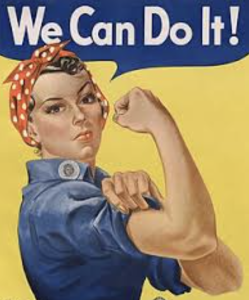1
Section One: The Fundamentals
A) What do we know about sport? What are common assumptions we make about sport and society?
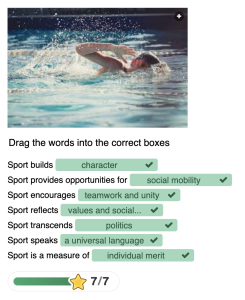
| Sports are often seen as a way to build character because they teach valuable life skills such as discipline, teamwork, perseverance, and resilience. Through sports, individuals learn how to set goals, work hard to achieve them, and cope with both success and failure. The structure of sports encourages responsibility, as athletes must balance training, competition, and personal commitments. It also fosters cooperation and communication when working as part of a team. Overcoming obstacles and pushing through challenges in sports can help build mental toughness and confidence. Ultimately, sports can help shape a person’s character by reinforcing the importance of effort, accountability, and collaboration.
I think some of the comments regarding social mobility surprised me as I never thought of sports as a way to move up socially. I always saw sports primarily as a way to stay active or for enjoyment, not necessarily as a pathway to better social or economic status. However, after reflecting on the idea, it makes sense that sports can serve as a tool for upward mobility. Many athletes, especially in marginalized communities, have used sports as a way to gain scholarships, build careers, and access opportunities that might not have been available otherwise. Although this may not be the case for everyone, it is a way out for so many people. |
Exercise 3: Notebook prompt
What are some other metanarratives about sport that you are familiar with? Find an image or video clip or draw something yourself that captures this idea…
So what? Why does any of this matter? Does it matter? As something we grow up with – live with – play through – we don’t often interrogate the meanings of sport, and perhaps we don’t want to.
But being aware of these assumptions and metanarratives is especially important, I would argue, because of the centrality of sport to our everyday lives, the role that sport plays in shaping our childhood and worldviews and….. [finish that thought]
| Some common metanarratives about sport include the ideas of meritocracy, national pride, and competition. These are broad, overarching stories that shape how we view sport and its role in society. The meritocracy metanarrative, for example, promotes the belief that success in sport (and life) is achieved purely through individual talent and hard work. These narratives shape our perceptions of who should participate in sport, how they should behave, and what they should achieve. Often, they marginalize groups that don’t fit these molds, such as women in sport, LGBTQ+ athletes, or those from lower socioeconomic backgrounds. This matters because sport isn’t just about entertainment—it shapes our childhood experiences, influences how we understand success and failure, and impacts our sense of identity. Growing up with sport often means absorbing these ideas and believing in their truth. But, when we take a step back and critically examine these assumptions, we can see how they often reinforce harmful stereotypes and limit possibilities for inclusion and equity in sport. Being aware of these metanarratives is crucial because sport is central to many of our lives and worldviews. It teaches us about teamwork, competition, and resilience, but it also reinforces ideas about race, class, gender, and national identity.
|
B) What is social justice?
Exercise 4: Padlet Prompt
Think back to the last section and try to look at some of the ideas we discussed differently. How might sport and social justice actually co-exist?
Record any images, video clips, or gifs you added to the padlet and identify a point of intersection between sport and social justice (can be an issue or a barrier or a debate or something you would like to explore in more depth in this course) . Screenshot or paste in your response below.
Sport and social justice can co-exist as powerful tools for advocacy and activism by leveraging the global platform and unifying nature of sport to address and challenge societal inequalities. Advocacy efforts can focus on combating gender disparities in funding, media coverage, and access to opportunities, ensuring women athletes are given the same platforms and support as males. Campaigns highlighting the value of women’s sports and celebrating their achievements can shift cultural narratives, the movement to save women’s sports creates a foundation for fairness and equity, ensuring that future generations of female athletes can compete and thrive in an environment free of discrimination. 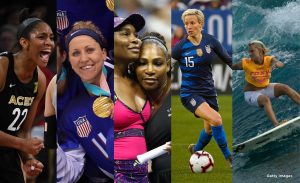
|
C) Social Justice Reading
(note: this activity is optional!)
D) KINESIOLOGY AND SOCIAL JUSTICE
Exercise 5:
Exercise 6:
What are the implications of bodies-at-risk discourse and the refusal to understand the health gap from a social justice perspective, according to the authors of this article?
| The authors argue that the “bodies-at-risk” perspective focuses too much on individual bodies that are vulnerable to health problems, without looking at the bigger picture of social factors that contribute to health inequalities. This view often ignores the root causes, like poverty, racism, or lack of access to healthcare, that affect people’s health. By not understanding the health gap from a social justice perspective, we miss the chance to make real changes to the systems that cause health inequalities. Instead of focusing on fixing individuals, the authors suggest we need to focus on fixing the larger societal issues that create these gaps in the first place.
|
Section Two: Sport Feminism
Exercise 7: Notebook Prompt
What is feminism? What does it mean to you? Choose one of the images below and explain how it captures your understanding of feminism (or find one that does speak to you and paste this into your pressbook with an explanation of why it matters to you.
|
Feminism is the belief in and advocacy for the equality of all genders, particularly focusing on dismantling systems of patriarchy and addressing the societal structures that perpetuate gender-based inequalities. To me, feminism is about recognizing and challenging the power dynamics that oppress not just women but marginalized genders in a broader sense. The “We Can Do It!” image, featuring the iconic figure of Rosie the Riveter, is a powerful symbol of feminism. For me, this image reflects the intersection of gender equality and self-determination. It reminds me that feminism isn’t just about advocating for women’s rights; it’s about challenging the limitations imposed by rigid gender norms and striving for a world where everyone is free to pursue their potential. The “We Can Do It!” message embodies the spirit of resistance and empowerment
|
Exercise 8: Notes Prompt (optional)
NB: Cornell notes is a great resource that teaches effective notetaking. Unfortunately, our system can’t save notes taken in the H5P app, so this is fully optional.
Exercise 9: Crossword Activity
Exercise 10: Padlet Prompt
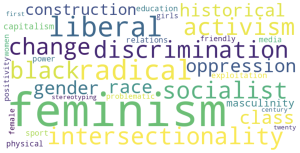
|
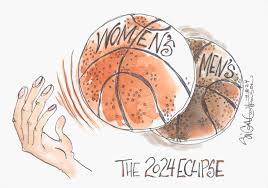
| The landscape of women’s sports is undeniably shifting, with athletes like Angel Reese and Caitlin Clark generating significant enthusiasm and attention. This change reflects a broader cultural movement toward more visibility and respect for female athletes. However, despite these strides, the level of attention and investment in women’s sports still lags behind that of men’s. I believe that the landscape is changing for the better, as more female athletes are starting to stand out, women’s sports are getting more attention and could possibly receive equal attention as mens does. This evolution in the landscape is a positive step, but true equity will require sustained efforts across societal, cultural, and institutional levels.
|

